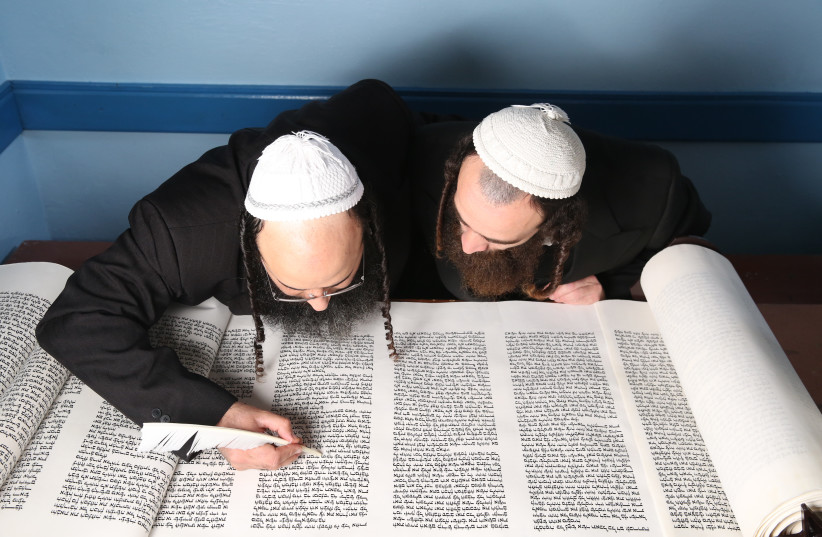As we begin the book of Exodus this week, we find an extraordinary cluster of women who band together to save baby Moses.
They include Shifra and Puah, midwives in Egypt; his mother and his sister (both unnamed in this story); Pharaoh’s daughter (also unnamed); and a little later on, Moses’s wife, Zipporah, who saves the adult Moses as he is going down to Egypt and endangers himself for failing to circumcise his son. Each story shows incredible strength, heroism and integrity that later become reflective of the daughters of Israel who are credited with raising up the nation that had left the Land of Israel.
Looking at the story more carefully, in chapter one Pharaoh tries to stem the rising birth rate of the Hebrews, concerned they will become too numerous and thus, too strong. His first attempt, forced harsh labor, fails to impact the Israelites’ fertility. In his second attempt, he calls in midwives Shifra and Puah and orders them to kill the baby boys as they are born and pretend that they died during birth.
It is not clear from the verse if Shifra and Puah are Hebrews or midwives of the Hebrew women. Commentaries weigh in on both sides.
The midrashic interpretation identifies them as either Jochebed and Miriam, or Jochebed and Elisheva (Aaron’s wife), using different professional names at work. This approach deepens the connection of Israelite women to the salvation of the people, as well as equating Shifra and Puah with familiar and beloved biblical heroines, a motif common in midrashic interpretation.
“They were not Hebrew midwives because how could he [Pharaoh] have trusted Hebrew midwives to kill Hebrew children?”
Rabbi Isaac Abarbanel
The second school of interpretation sees them as Egyptian midwives who feared God. Rabbi Isaac Abarbanel comments: “They were not Hebrew midwives because how could he [Pharaoh] have trusted Hebrew midwives to kill Hebrew children?” I have always preferred this view – the Torah’s awareness that fear of God can be found among moral, upright people regardless of religion or race.
A third idea comes from a student, who suggested that they appeared to be Egyptian but were really Hebrew. This interpretation bridges both of the schools above, keeping the midwives’ Hebrew identity but explaining why Pharaoh thought they could be recruited for his nefarious plan. Hebrew women who married Egyptian men would become, seemingly, Egyptian. In this case, Pharaoh thought they were loyal subjects. On the inside, however, they carry an unyielding commitment to their people and their fear of God.
Pharoah's underestimation of women
In this first instance of Pharaoh’s underestimation of women, he fails to recognize that women who bring life into the world are unworthy allies in facilitating violent death. They even use his own words against him: He told them to carry it out secretly at the moment of birth. The Hebrew women, say the midwives, are lively and give birth quickly, unlike the Egyptian women. In this way, they use his language of otherness to describe and ostensibly demean the Hebrew women while simultaneously saving them.
The chapter ends with Pharaoh publicly telling the nation to throw the boys into the Nile, but simultaneously orders that the girls or daughters (same word) be allowed to live. It is thus all the more powerful that chapter two opens with daughters who defeat Pharaoh. He thinks so little of them that the Torah reveals this as a fatal flaw in his thinking, by telling us that the daughter of Levi and the daughter of Pharaoh save baby Moses!
In this chapter, Moses’s mother, described as the daughter of Levi, gives birth to a boy. After three months she can no longer hide him, so she puts him into a little basket to float on the Nile. Along comes Pharaoh’s own daughter who hears the baby crying. She pulls him out of the water and recognizes that he is a Hebrew baby who should have been condemned to death.
Instead of following her father’s orders, she gives him the name Moses – because he was drawn from the water – and asks if anyone knows of a wet nurse to feed the baby. Luckily, his sister is nearby and calls for her mother. The daughter of Pharaoh hands over baby Moses to the daughter of Levi, who will nurse him until he moves to the palace. There is a tacit agreement between both of Moses’s mothers that they will ensure his survival together. In Egyptian, Moses means “son,” emphasizing the deep connection these women feel for this boy.
Moses grows up among the Egyptian elite, which will give him the education and resources to take on the mantle of leadership. But when he goes outside and sees the slavery of the Hebrews, he cannot stomach the injustice of slavery, particularly of his brethren.
The clear influences that have shaped his character from birth are these women who have nurtured and nourished him with their courage and strength, instilling in him a core fear of God and a sense of mission through salvation.
The writer teaches contemporary Halacha at the Matan Advanced Talmud Institute. She also teaches Talmud at the Pardes Institute of Jewish Studies, as well as courses on sexuality and sanctity in Jewish tradition.

